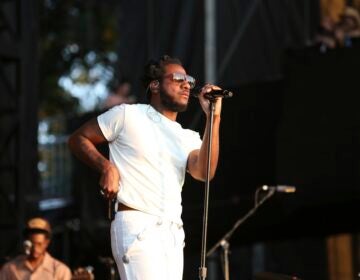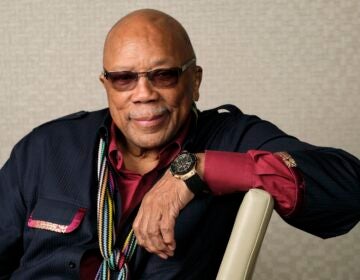‘Shape’ singing strikes high note in Philadelphia
The centuries-old tradition of sacred harp choral singing brings people of any singing ability into 4-part harmony.
About 150 people gathered at the Broad Street Ministry over the weekend for choral singing. But they didn’t come to listen; they all came to participate. The centuries-old tradition of sacred harp choral singing brings people of any singing ability into 4-part harmony.
Listen:
[audio: 100125PCSHAPE2.mp3]
Kevin Griffin-Moreno drove from Baltimore to sing sacred harp.
Griffin-Moreno: There’s an old saw – people will happily drive 15 hours to sing sacred harp, but wouldn’t cross the street to listen to sacred harp music, because of it’s raw sound.
Moreno is a trained classical singer, but now only sings sacred harp. He says it satisfies on three levels – musical, spiritual, and communal.
Here’s how it works. People come – it might be 20 people or 200 – and sit in a square-shape that separates the the 4 parts of bass, tenor, soprano, and alto. Each section is layered with more rows of chairs, stretching to the four walls of the room. A song leader stands in the center.
The room at the Broad Street Ministry is full-to-bursting with singers – there is no room for an audience. The singing goes on for 6 hours. Moreno says he never gets tired.
Griffin-Moreno: We don’t rehearse – we are the performers and the audience. This is a tradition that is participatory, not passive.
This style of choral singing is also called shape-note singing, for the distinct shapes of the written notes. It has its roots in rural England, but it was colonial Americans who created the shapes for fa, so, la, and mi.
Merritt: Fa is a triangle, the la is a square, a so is a round note, and a mi is a little diamond shape. fa so la fa so la mi fa
That’s John Merritt, from Oxford, Mississippi. He says the shaped notes were patented around the time of the American Revoltion.
Merritt: The idea was so the average person – it would make it easier to learn how to sing.
The singing style is gaining traction with younger people. A group of mostly twenty-somethings meet in West Philadelphia every month at an anarchist storefront space. Elizabeth Stokes, who is 30 years old, says the first time she heard shape-note music she hated it.
Stokes: Sometimes people are harmonizing in ways that are not that harmonious – but that’s part of the sound – you have to be ready for that. When everyone is giving that effort and that emotion sound – it’s a very powerful human experience.
No one is turned away. At the Broad Street ministry there were Baptists from Mississippi, Amish from Lancaster, Episcopalians from Baltimore, and anarchists from West Philly. Stokes says they all harmonize together – more or less.
WHYY is your source for fact-based, in-depth journalism and information. As a nonprofit organization, we rely on financial support from readers like you. Please give today.




